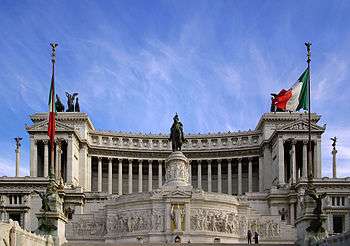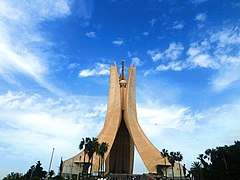National monument
A national monument is a monument constructed in order to commemorate something of importance to national heritage, such as a country's founding, independence, war, or the life and death of a historical figure.


The term may also refer to a specific monument status, such as a national heritage site, by reason of their cultural importance rather than age (see National Monument (United States)).
National monument status is usually granted to colossal symbols of national identity.
Overview
Structures or areas deemed to be of national importance and afforded protection by the state are part of a country's cultural heritage. These national heritage sites are often called something different per country and are listed by national conservation societies. Romania has listed at least one plant as a national monument, Nymphaea lotus f. thermalis.[1]
Example

National monument
- The National Monument (Central Jakarta)
- Maqam Echahid (Algiers)
- The Pakistan Monument (Islamabad)
- The National Martyr's Memorial (Dhaka)
- The National Monument (Kuala Lumpur)
- The Netherlands National Monument (Amsterdam)
- The National Monument of Scotland (Edinburgh)
- National Monument to Victor Emmanuel II (Rome)
- National Kaiser Wilhelm Monument (Berlin)
- Pobednik (Belgrade)
National heritage sites
- National heritage sites of South Africa
- National Monument (Bosnia and Herzegovina)
- National Monuments of Colombia
- National monuments of Ireland
- National monuments of Portugal
- National monuments of Singapore
- National monuments of Spain
- National Monument (United States)
See also
- Cultural identity
- National icon
- National memorial
- National myth
References
- Veler, Ana (November 2008). "Nymphaea lotus up north, naturally". Water Gardeners International. Bucharest, Romania. 3 (4). Retrieved 9 August 2014.